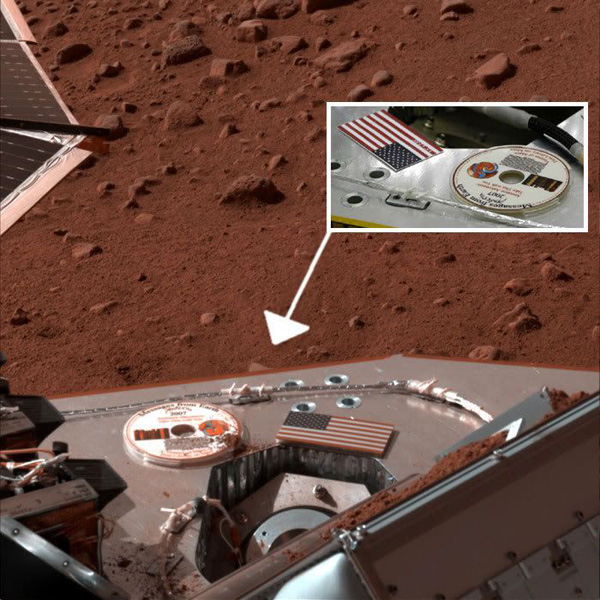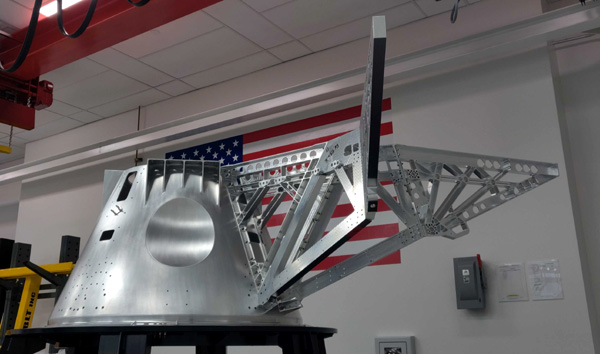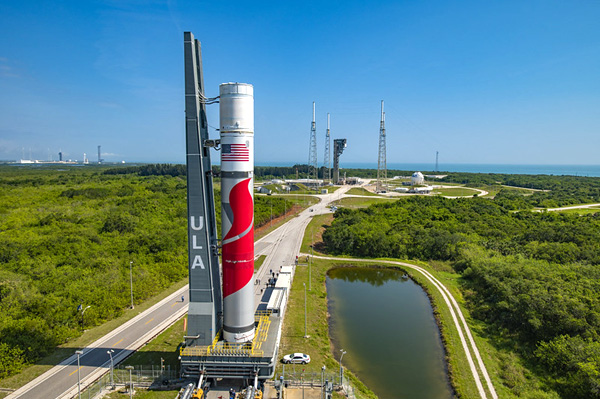
NASA, ESA, CSA, STScI, and G. Villanueva (NASA’s Goddard Space Flight Center). Image Processing: A. Pagan (STScI)
Webb Maps Surprisingly Large Plume Jetting From Saturn’s Moon Enceladus (News Release)
A water vapor plume from Saturn’s moon Enceladus spanning more than 6,000 miles – nearly the distance from Los Angeles, California to Buenos Aires, Argentina – has been detected by researchers using NASA’s James Webb Space Telescope. Not only is this the first time such a water emission has been seen over such an expansive distance, but Webb is also giving scientists a direct look, for the first time, at how this emission feeds the water supply for the entire system of Saturn and its rings.
Enceladus, an ocean world about four percent the size of Earth, just 313 miles across, is one of the most exciting scientific targets in our solar system in the search for life beyond Earth. Sandwiched between the moon’s icy outer crust and its rocky core is a global reservoir of salty water.
Geyser-like volcanoes spew jets of ice particles, water vapor and organic chemicals out of crevices in the moon’s surface informally called ‘tiger stripes.’
Previously, observatories have mapped jets hundreds of miles from the moon’s surface, but Webb’s exquisite sensitivity reveals a new story.
“When I was looking at the data, at first, I was thinking I had to be wrong. It was just so shocking to detect a water plume more than 20 times the size of the moon,” said lead author Geronimo Villanueva of NASA’s Goddard Space Flight Center in Greenbelt, Maryland. “The water plume extends far beyond its release region at the southern pole.”
The length of the plume was not the only characteristic that intrigued researchers. The rate at which the water vapor is gushing out, about 79 gallons per second, is also particularly impressive.
At this rate, you could fill an Olympic-sized swimming pool in just a couple of hours. In comparison, doing so with a garden hose on Earth would take more than 2 weeks.
The Cassini orbiter spent over a decade exploring the Saturnian system, and not only imaged the plumes of Enceladus for the first time but flew directly through them and sampled what they were made of. While Cassini’s position within the Saturnian system provided invaluable insights into this distant moon, Webb’s unique view from the Sun-Earth Lagrange Point 2 one million miles from Earth, along with the remarkable sensitivity of its Integral Field Unit aboard the NIRSpec (Near-Infrared Spectrograph) Instrument, is offering new context.
“The orbit of Enceladus around Saturn is relatively quick, just 33 hours. As it whips around Saturn, the moon and its jets are basically spitting off water, leaving a halo, almost like a donut, in its wake,” said Villanueva. “In the Webb observations, not only was the plume huge, but there was just water absolutely everywhere.”
This fuzzy donut of water that appeared ‘everywhere,’ described as a torus, is co-located with Saturn’s outermost and widest ring – the dense “E-ring.
” The Webb observations directly demonstrate how the moon’s water vapor plumes feed the torus. By analyzing the Webb data, astronomers have determined roughly 30 percent of the water stays within this torus, and the other 70 percent escapes to supply the rest of the Saturnian system with water.
In the coming years, Webb will serve as the primary observation tool for the ocean moon Enceladus, and discoveries from Webb will help inform future solar system satellite missions that will look to explore the subsurface ocean’s depth, how thick the ice crust is, and more.
“Right now, Webb provides a unique way to directly measure how water evolves and changes over time across Enceladus' immense plume, and as we see here, we will even make new discoveries and learn more about the composition of the underlying ocean,” added co-author Stefanie Milam at NASA Goddard. “Because of Webb’s wavelength coverage and sensitivity, and what we’ve learned from previous missions, we have an entire new window of opportunity in front of us.”
Webb’s observations of Enceladus were completed under Guaranteed Time Observation (GTO) program 1250. The initial goal of this program is to demonstrate the capabilities of Webb in a particular area of science and set the stage for future studies.
“This program was essentially a proof of concept after many years of developing the observatory, and it’s just thrilling that all this science has already come out of quite a short amount of observation time,” said Heidi Hammel of the Association of Universities for Research in Astronomy, Webb interdisciplinary scientist and leader of the GTO program.
The team’s results were recently accepted for publication in Nature Astronomy on May 17, and a pre-print is available here.
Source: NASA.Gov


































